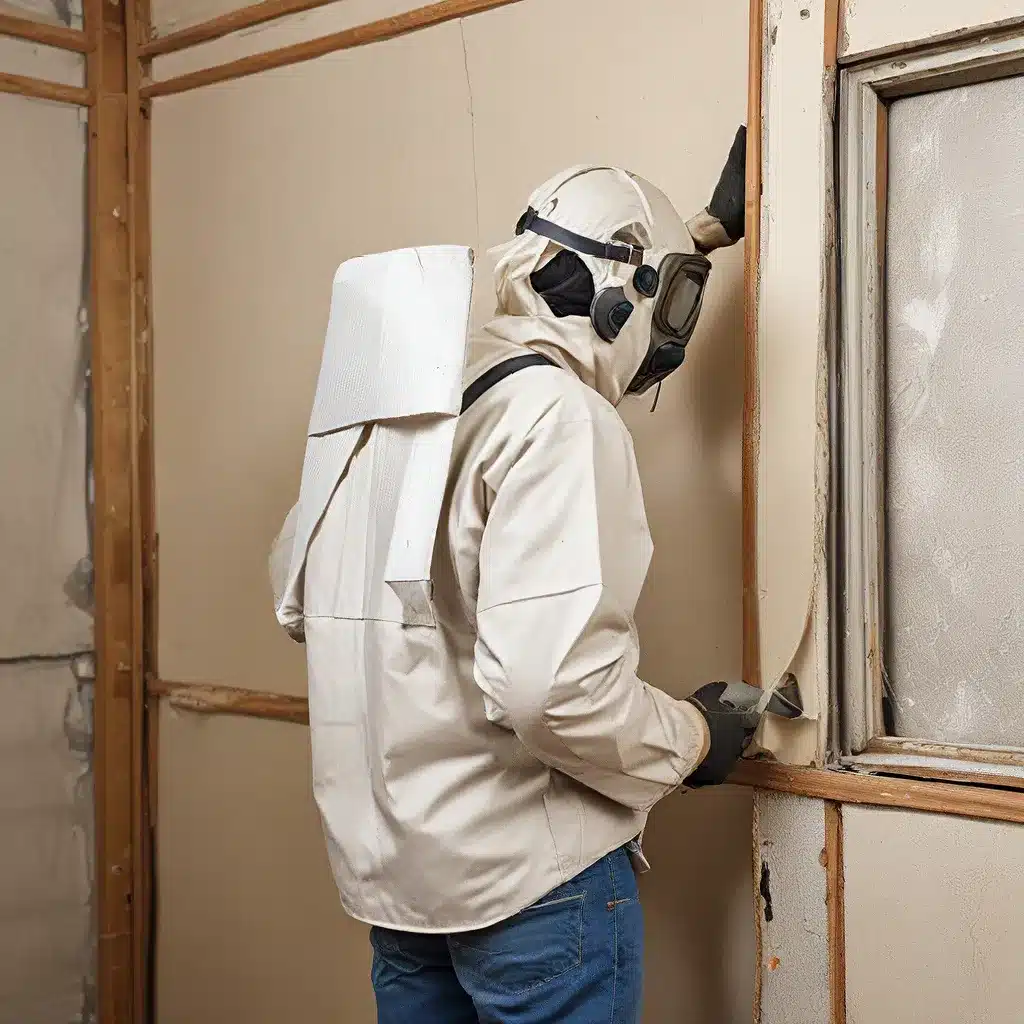Asbestos: The Silent Menace in Our Homes
Ah, the joys of home improvement projects – renovating that dated kitchen, restoring the creaky floors, or tackling that nagging damp issue in the basement. But wait, what’s that lurking in the shadows? Asbestos, the silent killer that’s been haunting our homes for decades.
As a homeowner, the thought of dealing with asbestos can be downright terrifying. I’ve been there, staring at that crumbling insulation, wondering if I’m about to unleash a toxic time bomb. But the truth is, with the right precautions and knowledge, you can safely tackle asbestos removal and reclaim your home.
The Hidden Dangers of DIY Asbestos Removal
It all started when my neighbor, a self-proclaimed construction expert, decided to tackle the asbestos insulation in his house. “No problem,” he said, “just wear a mask and you’re good to go.” But as I dug deeper, I discovered that the reality is far more complicated.
One Reddit user shared their harrowing experience, where they learned the hard way that asbestos doesn’t just disappear when you put on a mask. The fibers can linger in the air for a long time if the material is disturbed, and with poor ventilation, the risk of exposure skyrockets.
I also found a website that cautions against DIY asbestos removal, highlighting the importance of using licensed professionals. Apparently, in some states, you even need a special license to remove more than 10 square meters of bonded asbestos. Yikes!
The bottom line is this: asbestos removal is no joke. It’s a delicate and dangerous process that requires specialized training and equipment. Trying to tackle it on your own could put your health and the safety of your family at serious risk.
Navigating the Asbestos Minefield: A Comprehensive Guide
So, what’s a conscientious homeowner to do? Well, I’ve done some digging, and I’m here to share my learnings with you. Buckle up, because we’re about to embark on a journey through the world of safe asbestos removal.
Understanding the Asbestos Threat
First, let’s talk about what we’re dealing with here. Asbestos is a naturally occurring mineral that was once widely used in construction materials due to its fire-resistant and insulating properties. However, we now know that when the fibers are disturbed and become airborne, they can cause serious health issues, including lung cancer, mesothelioma, and asbestosis.
So, if you suspect your home might contain asbestos, it’s crucial to identify the type and determine the condition of the material. Friable asbestos, which can be crumbled or reduced to powder by hand pressure, is the most dangerous and must be removed by a licensed professional. Bonded asbestos, on the other hand, is a bit more manageable, but still requires caution.
Preparing for Asbestos Removal
Now, let’s talk about the nitty-gritty of safe asbestos removal. If you’re tackling a small project, like removing a few square meters of bonded asbestos, you might be able to do it yourself. But make sure to follow all the safety protocols to the letter.
First and foremost, protective equipment is a must. We’re talking full-body suits, gloves, and respirators – the works. You’ll also need to seal off the work area to prevent the fibers from spreading and use specialized tools to minimize dust and debris.
And when it comes to disposal, you can’t just toss that asbestos-laden material in the regular trash. Nope, it needs to be bagged, labeled, and taken to an approved disposal site. Cutting corners here could lead to serious legal and environmental consequences.
Calling in the Experts: Hiring a Licensed Asbestos Removalist
But what if the job is too big or the material is friable? Well, that’s when it’s time to call in the professionals. Licensed asbestos removalists have the training, equipment, and expertise to tackle these tricky situations safely and in accordance with all relevant regulations.
These folks know the ins and outs of asbestos handling and disposal, and they’ll work to minimize the risk of exposure for you and your family. Sure, it might cost a bit more, but when it comes to your health and safety, it’s worth every penny.
Sealing the Deal: Encapsulating Asbestos
Now, what if you’ve got asbestos-containing materials that are in good condition and you don’t want to remove them? Well, there’s another option: encapsulation.
Encapsulation involves applying a special sealant to the asbestos-containing material, which locks in the fibers and prevents them from becoming airborne. This can be a cost-effective and less disruptive solution for some situations, but it’s important to have a professional do the job to ensure it’s done right.
Just keep in mind that encapsulation isn’t a permanent fix – the sealant will need to be inspected and re-applied periodically to maintain its effectiveness. And if the material ever becomes damaged or deteriorated, it’s back to square one with a full-blown asbestos removal project.
Embracing the Challenge: Reclaiming Your Home, Safely
I know, I know, dealing with asbestos can feel like navigating a minefield. But with the right approach and a healthy dose of caution, you can safely tackle this challenge and reclaim your home.
Whether you’re tackling a DIY project or bringing in the professionals, the key is to never underestimate the risks and always prioritize your safety. It might take a bit more time and effort, but trust me, it’s worth it to protect yourself and your loved ones from the silent dangers of asbestos.
So, let’s roll up our sleeves and get to work! With the right plan and the right tools, you can conquer the asbestos challenge and create the home of your dreams. And if you need a hand, Adam Cleaning is here to help – we’ve got the expertise and the equipment to get the job done safely and efficiently.







